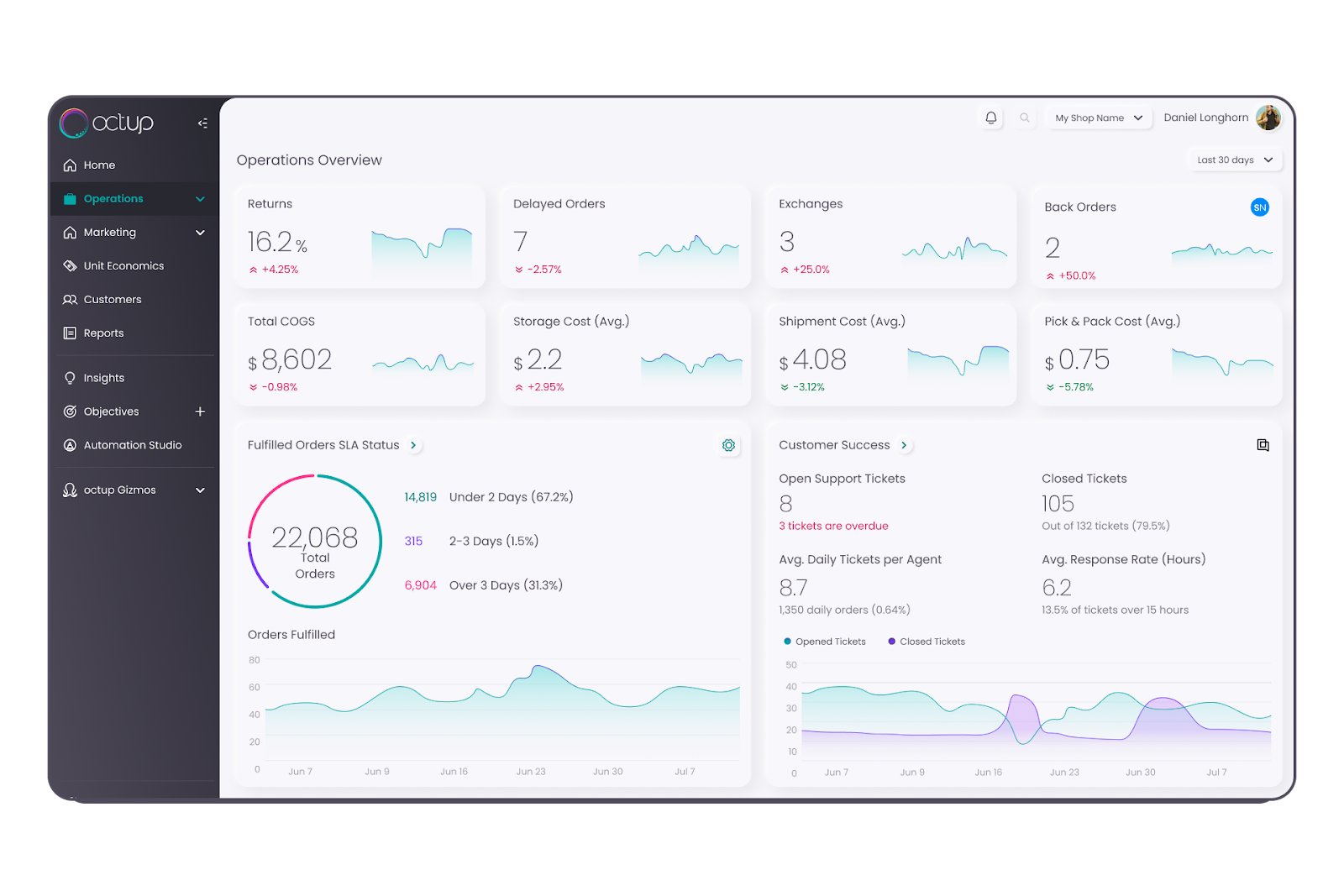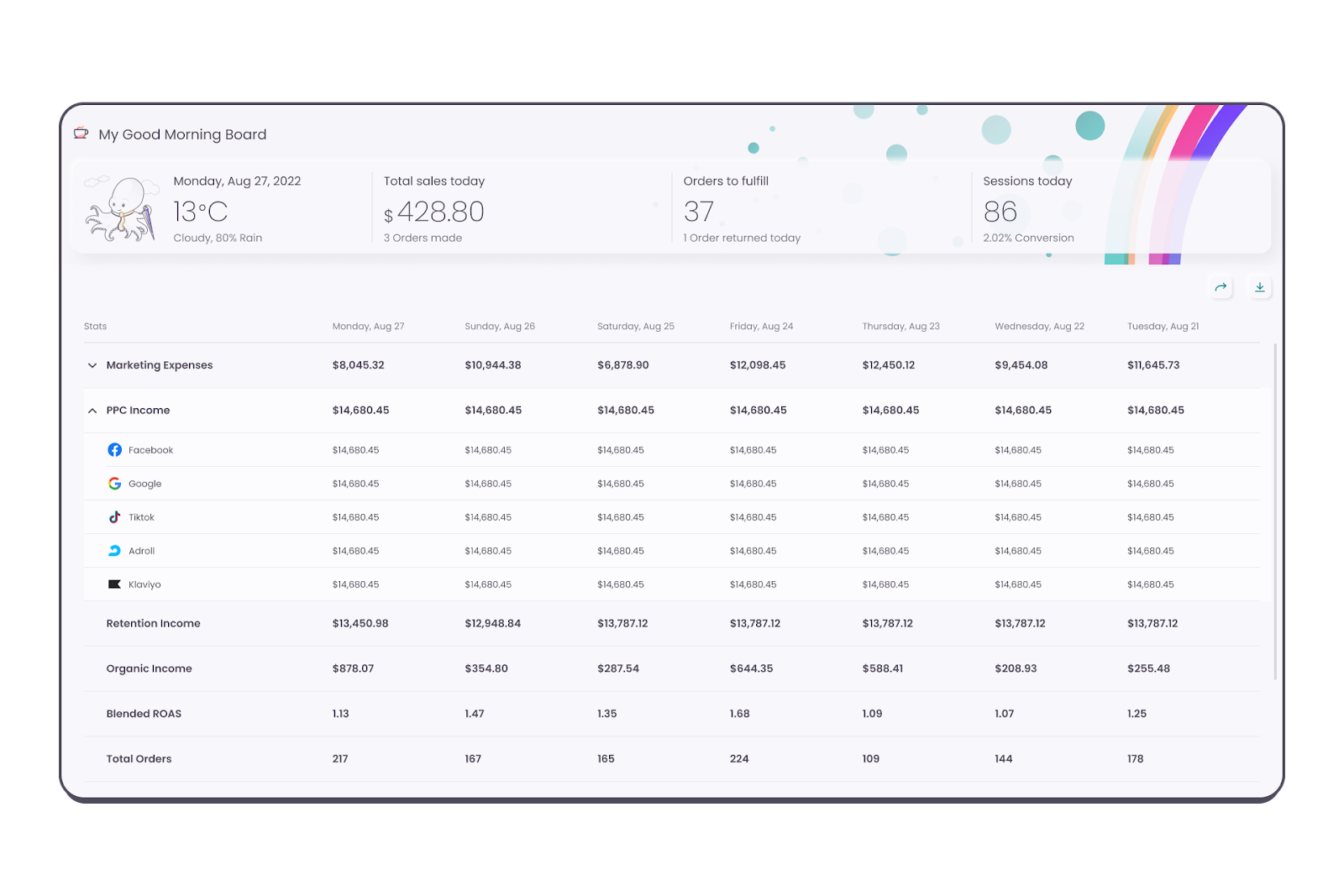
How to Make Strategic Decisions with Ecommerce Data
While running your Ecommerce store, the amount of data available to you and the importance of properly leveraging this data to make key decisions continues to grow immensely. But this influx of data can be intimidating, especially when it’s coming at you from multiple sources. It’s understandable that you may not be well-versed in how to make strategic decisions with it.
In this article, we’ll dive into the risks of not using data wisely, what happens when you do start using data for strategic decision making, the types of Ecommerce data that are most important to track and finally, a real life example of a customer on their data journey.
What happens when you don’t use data wisely?
Ignoring the power of data in your business or not using it wisely is like taking a hike blindfolded. Without the powerful insights data provides, you find yourself relying on ‘gut feel’ when it comes to making key business decisions. Although intuition alone can lead to some success, this will not pay off in the long run.
What if a customer orders a product from your website and you don’t realize there is no inventory? With an experience like this, you may lose the customer forever, and are throwing away all the marketing effort it took to acquire this customer. Another risk could be missing revenue or market share opportunities through non-optimized pricing strategies. Or your marketing efforts may become less targeted and efficient, leading to lower ROI and customer engagement. Finally, making uninformed decisions can lead to increased operational costs and inefficiencies.
If you want to create positive customer experiences and also turn a profit, getting to grips with your business data is a no brainer.
When you start using data for strategic decision making, things look brighter
Embracing data can help you decode your customers' behaviors and preferences, allowing you to create top notch commerce experiences. By deeply analyzing customer interactions, purchase patterns, and customer feedback, you can tailor your strategies with precision. It’s about understanding the subtle cues your customers are giving you and making strategic adjustments in real time. This isn’t just about increasing sales; it’s about building relationships and loyalty that last.
You can’t ignore inventory management. You know the headache of overstocking or worse, running out of a highly desirable item. Data-driven inventory management can be a game changer. Forecasting demand more accurately can help you balance stock levels.
When it comes to pricing, it can’t be guesswork. Using data to monitor market trends and competitor pricing helps you set prices that attract customers while protecting your margins. It’s about being agile, ready to adjust your pricing strategy in response to market shifts.
Targeted marketing is where your experience and data meet most effectively. Personalized marketing isn't just a buzzword; it's a necessity. Segmenting your customers based on their behavior and preferences allows for incredibly targeted campaigns. This can result in higher engagement, better conversion rates, and customers who feel understood and valued.
Lastly, performance tracking (the cornerstone of strategic decision-making) can tell you when something’s off, but data shows you exactly what it is. Continuously analyzing your business performance across all fronts helps you stay ahead, adapt strategies, and identify new opportunities. It's about being proactive, not reactive.
What are key types of Ecommerce data to pay attention to?
As mentioned, the world of data can be convoluted and confusing. That is why we are here to help explain the key data to pay attention to specifically when you are running an Ecommerce operation.
Fulfillment & Logistics: As an operator, you know that the journey from 'click to customer' is critical. Fulfillment and logistics data is the backbone of your Ecommerce operation, giving you a clear picture of how efficiently you're delivering products to your customers. It helps identify bottlenecks and improve delivery times, directly impacting customer satisfaction and loyalty.
Think of this data as the pulse check on how well you're meeting customer expectations following a purchase. Here are some key fulfillment and logistics stats to pay attention to and how to track them:
- On-time fulfillment %: the percentage of orders shipped within the promised time frame
- Avg shipment cost: the total shipping expenses divided by the number of orders shipped over a specific period
- Average fulfillment SLA: how long it takes to fulfill each order on average
- Number of delayed orders: the number of orders that were not delivered within the expected time frame
- Number of stuck orders: the number of orders that have not progressed in the shipping or fulfillment process for an unusually long period
- Orders to fulfill: the number of orders received that have not yet been processed or shipped
Operations: Operations data is the lens through which you view your business's health. It encompasses everything from inventory turnover rates to customer service response times. By analyzing this data, you can streamline processes, enhance efficiency, and boost productivity.
Remember, efficient operations are the key to scaling your business and maintaining a competitive edge. Here are some key operations stats to pay attention to and how to track them:
- Returns: the number of orders that customers have sent back after delivery
- COGS: the total cost incurred for goods sold in a specific period, including expenses for production, procurement, and handling
- Warehouse statistics: the data related to inventory levels, order fulfillment efficiency, and storage capacity utilization in the warehouse
- Product statistics: the sales, returns, customer feedback, and inventory levels of each product

Marketing: Marketing data is your roadmap for connecting with your customers. It informs you which channels are performing best, what messaging resonates with your audience, and where you should allocate your budget for maximum impact.
Utilizing this data effectively means creating more targeted, effective campaigns that drive both engagement and sales. Here are some key marketing stats to pay attention to and how to track them:
- ROAS: Return On Ad Spend, calculated by taking the revenue attributed by a campaign by the cost of that campaign.
- Ex/ $2000 ad campaign brought in $3000 of revenue. Therefore ROAS is 150% or 1.5x.
- Blended ROAS: The blended return on ad spend across a number of campaigns or channels. The best way to see how your overall ad spend is working to bring in customers.
- ROAS new customers:
- ROAS returning customers:
- Ad spend by channel: the amount spent on advertising for each specific marketing channel during a given period
- CPA: Cost Per Acquisition, calculated as the total marketing and advertising expenses divided by the number of new customers acquired during that period
- CAC: Customer Acquisition Cost, calculated by dividing the total marketing and sales expenses by the number of new customers gained in a specific period
- Marketing Efficiency: measured by analyzing the ratio of marketing spend to the resulting increase in sales or customer engagement

What if you could see all your data in one place?
There are many different sources where your Ecommerce data could be coming from, but how do you see all your data in one place? Historically, you are forced to either spend hours going application to application to get a good picture of your business results, or spending large amounts of time and money building complex ETL processes. Enter Octup. We offer a platform designed for Ecommerce brands, ensuring precise and immediate cross-function insights into your business operations through real-time visibility and detailed metrics.
Let’s see how it works in the real world. Our customer Underoutfit needed a platform to better manage their complex operations and help track operational costs, better understand their stock costs, and save time spent on data collection and analysis.
Octup’s powerful platform became their single source of the truth, helping them quickly understand what is happening across their business. Underoutfit’s Head of Operations praised the platform, saying “The light that your platform is putting into our operational and marketing data is amazing. Although we did have access to the data before, having something that is ready and easy to read is very good.”
Integrating data into every facet of your Ecommerce business isn’t just smart; it’s essential for staying relevant and successful. Do you want to feel empowered by your data, see all your business data in one place and make better decisions with it? Get in touch for a free 30-minute consultation.

Related Posts


